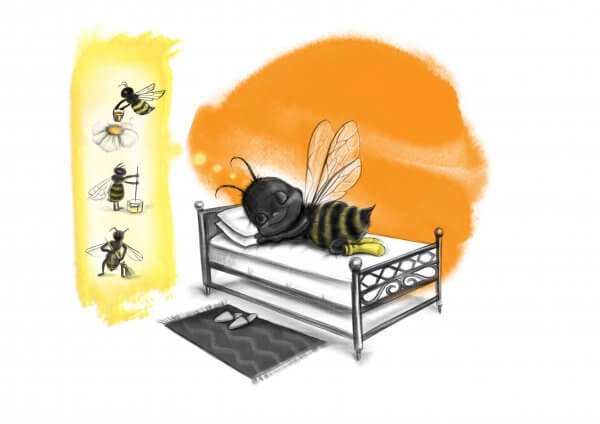Bees, probably like other insects, often look like a very primitive form of life. However, this species is one of the most stable and unchanging in the ecosystem. So why has evolution passed bees by? It turns out they’re not as simple as they seem, those busy bees. Here are a few interesting facts that make us admire them.
The queen bee lives for as long as 4-5 years, while worker bees only live 30-40 days. The queen bee got her ‘magical powers’ when she was still a little larva, and the worker bees fed her royal jelly much longer than the other larvae. This just goes to show that royal jelly is truly magical!
Over the course of its lifetime, one worker bee will fly a distance equal to about 1.5 times around the globe to produce about 1/10 of a teaspoon of honey.
The queen bee can lay up to 2,500 eggs a day. That’s more eggs a day than she weighs herself! What a mother!
The honeycomb is the perfect storage vessel. Honeycomb cells arranged side by side can hold the most honey with the least amount of building material (wax).
Bees can fly at speeds of 25km/h and flap their wings 200 times a second. So they could keep up with any sprinter.
When the queen bee dies, the colony grows itself another one. The best position never remains empty for long.
The only male bees in the hive are known as drones. They do not work, have no stinger and their only purpose is to mate with the queen bee. Come the fall, drones are thrown out of the hive without any ceremony — no one likes an idle body.
The worker bee has about 170 receptors for sensing smells. No perfume manufacturer can boast as many!
Because bees can’t speak, they communicate in a strange way — through dance! By wagging her tummy and walking in an eight-formation, the gatherer bee tells its sisters about where to look for the best nectar – what distance to fly and what direction to fly in. They calculate this trajectory and distance with a brain the size of a sesame seed. A truly miniature little Einstein…
A bee colony consists of 20,000–80,000 worker bees and just one queen bee. That’s some mother!
The queen bee decides how many male bee eggs to lay. Drones hatch from unfertilised eggs and inherit only the queen bee’s genes, while worker bees inherit both the genes of the queen bee and the drones.
Worker bees never sleep. At night, they conserve energy simply by not moving. Could you do that?
The queen does not mate in the hive. She goes out for quick spin, mates with 5–45 different males and then returns. This mating session lasts her a lifetime.
Honey is the only edible product that contains all the nutrients needed to sustain life.
The darker a honey is, the more nutritionally richer it is. Dark honey contains the most antioxidants.
Bee venom is more potent than a cobra’s! Fortunately, bees have very little of it.
Only worker bees use their sting, and only when they feel a real threat. Because their stinger is barbed, the bee can no longer pull it back once it has pierced something. Once they lose their stinger, they die. The queen has a smooth stinger and can even sting several times, but she uses it very rarely – mostly to get rid of other queen bees.
Know of any similarity between bees and dogs? The bee can be trained to find buried mines!
The worker bee can carry 80% of its weight in nectar or pollen. That’s some heavy lifting!
Worker bees have two stomachs: one for feeding and one for collecting nectar.
The bee is the smartest air conditioner there is. In winter, some worker bees function as ‘heaters’. They maintain a temperature of 35°C in the hive by vibrating their tummies. In the summer, bees flap their wings to cool the hive down and ensure air circulation.
So, what do you think of bees now?





